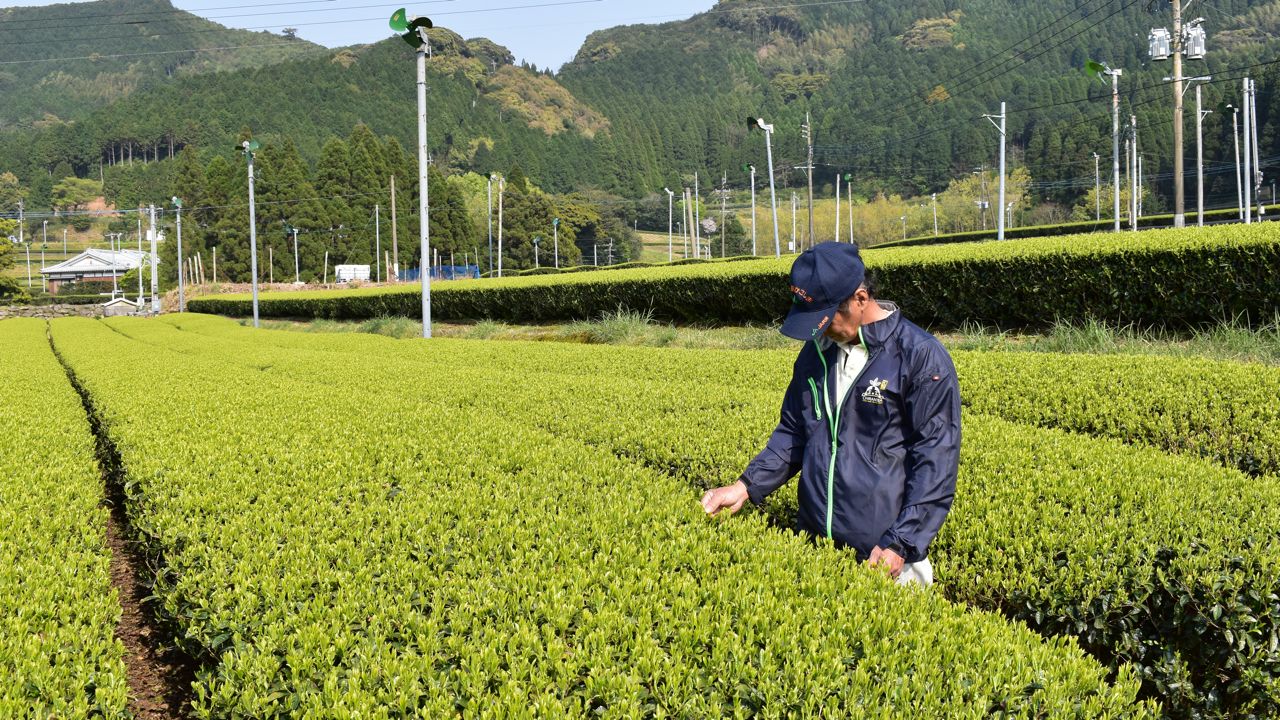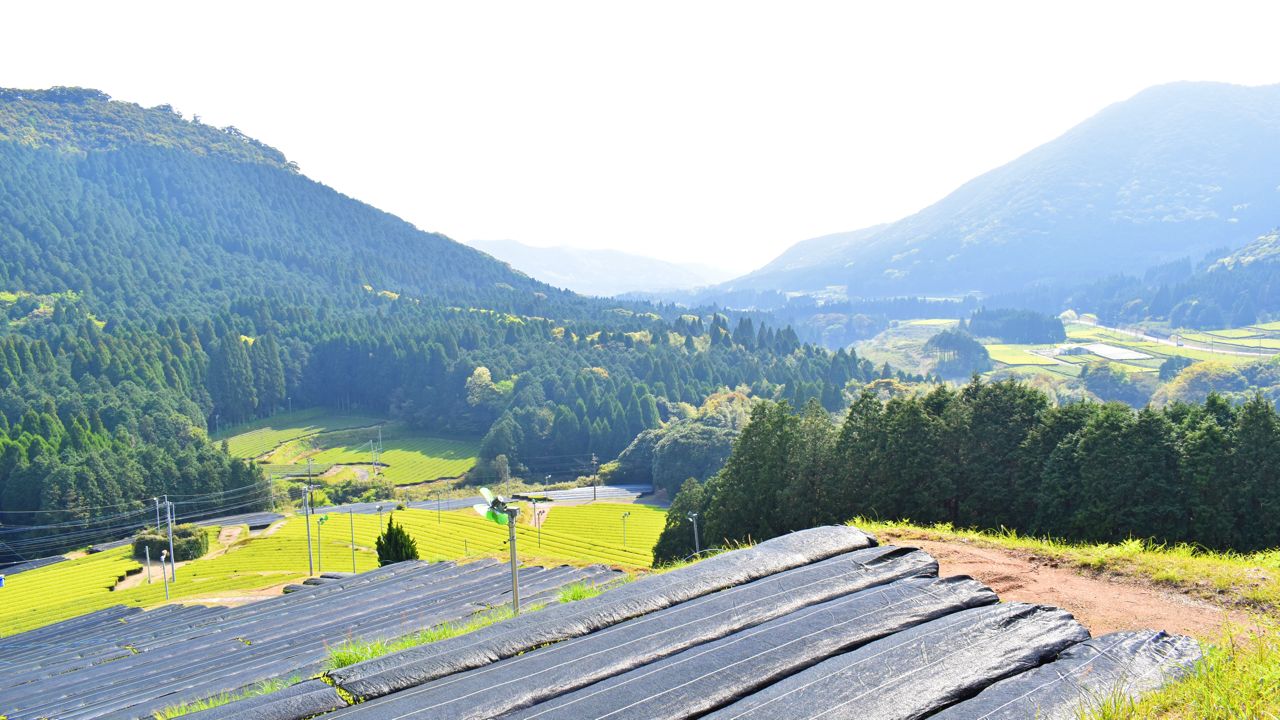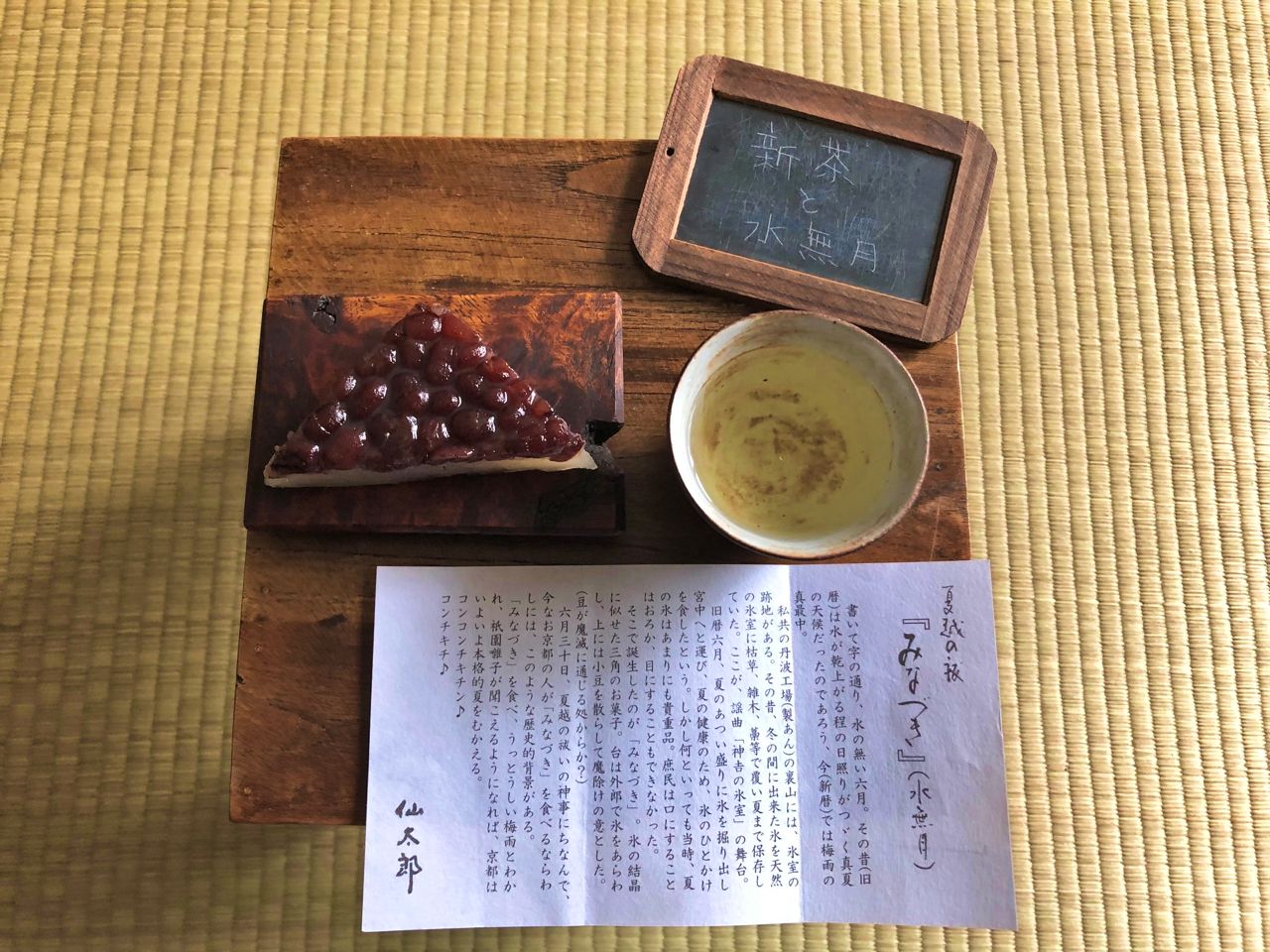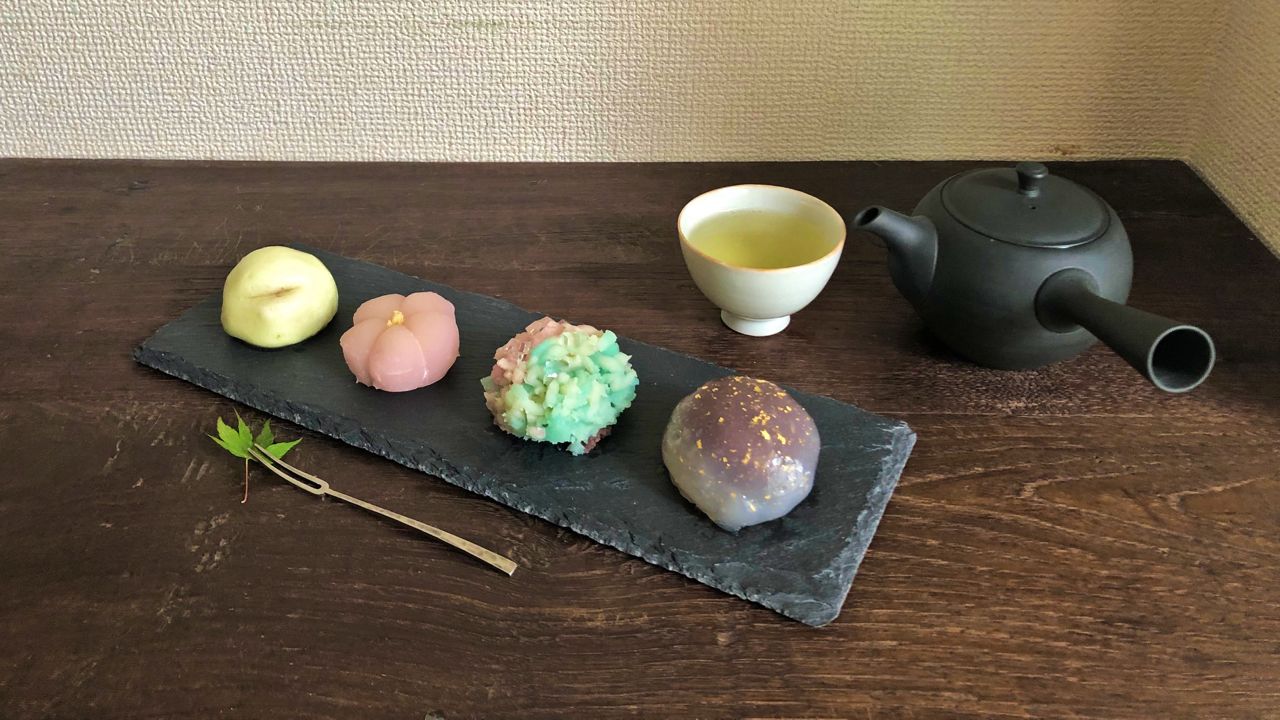June 2021 – Shincha from Kagoshima
The season of Shincha (新茶) has finally arrived! In front of tea shops, we raise the flags of Shincha to announce the arrival of the new green tea! For 2021, we selected a Shincha made in the region of Chiran (知覧) in the prefecture of Kagoshima (鹿児島県).

Shincha, Okuchirancha
In 2021 Kagoshima (鹿児島) became the top prefecture for the production of green tea in Japan, taking the spot of Shizuoka (静岡). The area of Chiran (知覧) in particular is famous for producing teas of high quality. Above all, tea harvested in the mountain of Ushirodake (後岳) of Chiran is excellent. We consider it the best green tea of Kagoshima. At an altitude of 400 meters, the thick fog and limpid air allows for excellent tea leaves.

We name this tea Oku-Chirancha (奥知覧茶), distinguishing it from general Chirancha (知覧茶). However, you should not look down at general Chirancha, because they also have excellent reputation. This Okuchirancha is made by slowly steaming the tealeaves using an infrared heating system, after carefully picking the best tea leaves from three tea varieties: Asatsuyu (for a round taste), Saemidori (for a rich umami) and Yabukita (for a rich flavor). The tea has an agreeable taste with a beautiful color.
The must-have Japanese sweet in June is Minazuki (水無月), that means literally "the month of June". It takes the form of a piece of ice with paste of red bean, which is said to "sweep bad things away". Contrary to its appearance, Minazuki is not very sweet, so it goes well with the delicacy of this Okuchirancha.

Shincha (新茶) & Minazuki (水無月)
Day of Wagashi
Wagashi (和菓子) is a generic word used to designate traditional Japanese sweets. June 16 is the day of Wagashi in Japan. The origin goes back to the Heian period, in 848 when a pandemic hit the country. The Emperor at that time decided to change the area name to "Kashō (嘉祥)" which means "good omen". He made 16 offerings of sweets to the deities in order to calm the pandemic and prayed for the serenity of Japan. That day was June 16.
Nowadays, the word of Wagashi is getting a little bit known around the world. Wagashi are not only for enjoying with the mouth, but also for enjoying with the eyes. For example, here are four sweets representing June in Japan. With a little imagination, can you figure out what they represent?

Here is the answer, from left to right: a green plum, a hydrangea, a pink hortensia and fireflies (at night). Japanese people feel the season with traditional sweets and appreciate the coming season.
Brewing Shincha
The amount of tealeaves should be adapted according to the desired taste: it should be around 2 to 3 grams of Shincha for 200ml (7oz) of spring water. The infusion should last 60 seconds in water at 80 to 85ºC (175 to 185ºF). The second infusion should be done more quickly, and the third one even more quickly in warmer water.
Enjoy!
